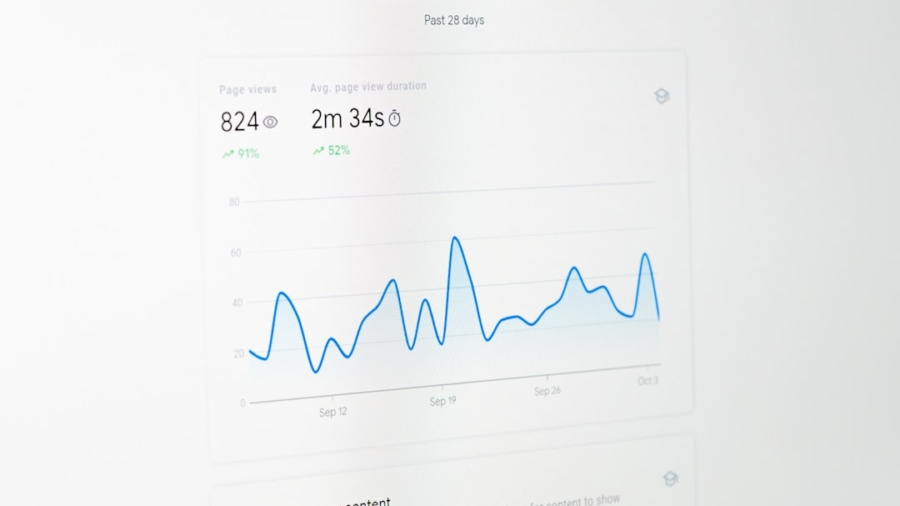Data-driven platforms have emerged as pivotal tools in various sectors, particularly in education. These platforms leverage vast amounts of data to inform decision-making processes, enhance user experiences, and optimize outcomes. At their core, data-driven platforms collect, analyze, and interpret data to provide insights that can lead to improved strategies and practices.
In the educational context, this means harnessing data from student performance, engagement metrics, and learning behaviors to create a more effective learning environment. The architecture of data-driven platforms typically involves several components: data collection mechanisms, analytical tools, and user interfaces that present findings in an accessible manner. For instance, learning management systems (LMS) like Canvas or Moodle integrate data analytics to track student progress and engagement.
These platforms can aggregate data from quizzes, assignments, and participation rates, allowing educators to visualize trends and identify areas needing attention. The ability to transform raw data into actionable insights is what sets these platforms apart, making them invaluable in the quest for educational excellence.
Key Takeaways
- Data-driven platforms use data to inform decision-making and improve outcomes in education.
- Data-driven platforms can help teachers track student progress, identify areas for improvement, and personalize learning experiences.
- Personalized learning through data-driven platforms allows for tailored instruction to meet individual student needs.
- Data-driven platforms play a crucial role in student assessment by providing real-time feedback and insights into student performance.
- Implementing data-driven platforms in the classroom requires training, support, and a shift in mindset towards data-driven decision-making.
The Impact of Data-Driven Platforms on Teaching
The integration of data-driven platforms into teaching practices has fundamentally altered the landscape of education. Educators now have access to real-time data that can inform their instructional strategies. This immediacy allows teachers to adjust their approaches based on student needs rather than relying solely on traditional assessment methods.
For example, if a teacher notices through a data dashboard that a significant number of students are struggling with a particular concept, they can pivot their lesson plans to address these gaps promptly.
By analyzing data trends over time, teachers can reflect on their teaching effectiveness and make informed decisions about curriculum adjustments.
This reflective practice is supported by evidence rather than intuition alone, leading to more targeted interventions. For instance, a teacher might discover that students perform better in collaborative settings based on engagement metrics from group projects tracked through the platform. Such insights encourage educators to experiment with different pedagogical approaches, ultimately enhancing the overall quality of instruction.
Utilizing Data-Driven Platforms for Personalized Learning

Personalized learning is one of the most significant benefits offered by data-driven platforms. These systems enable educators to tailor educational experiences to meet the unique needs of each student. By analyzing individual learning patterns and preferences, teachers can create customized learning paths that cater to diverse abilities and interests.
For example, platforms like DreamBox Learning use adaptive learning technologies that adjust the difficulty of math problems based on a student’s performance in real-time, ensuring that each learner is appropriately challenged. Furthermore, personalized learning extends beyond mere academic adjustments; it encompasses emotional and social dimensions as well. Data-driven platforms can track not only academic performance but also engagement levels and emotional responses to various activities.
This holistic view allows educators to identify students who may be disengaged or struggling emotionally and intervene accordingly. For instance, if a student consistently shows low engagement scores during online lessons, a teacher can reach out to provide additional support or modify the learning environment to better suit that student’s needs.
The Role of Data-Driven Platforms in Student Assessment
Assessment is a critical component of the educational process, and data-driven platforms have revolutionized how assessments are conducted and interpreted. Traditional assessment methods often rely on standardized tests that may not accurately reflect a student’s understanding or capabilities. In contrast, data-driven platforms facilitate ongoing formative assessments that provide a more nuanced view of student learning.
Tools like Kahoot! or Quizizz allow teachers to create interactive quizzes that can be administered frequently, offering immediate feedback and insights into student comprehension. Moreover, these platforms enable educators to analyze assessment data over time, identifying trends and patterns that inform instructional decisions.
For instance, if a teacher observes that students consistently perform poorly on specific types of questions across multiple assessments, they can deduce that there may be a gap in understanding that needs addressing. This data-driven approach not only enhances the accuracy of assessments but also empowers educators to implement targeted interventions that can lead to improved student outcomes.
Implementing Data-Driven Platforms in the Classroom
The successful implementation of data-driven platforms in the classroom requires careful planning and consideration. Educators must first ensure they have access to reliable technology and training on how to use these platforms effectively. Professional development opportunities are essential for teachers to become proficient in interpreting data and integrating it into their teaching practices.
Schools may consider hosting workshops or collaborating with technology experts to facilitate this process. Additionally, fostering a culture of data literacy among students is crucial for maximizing the benefits of these platforms. Educators should teach students how to interpret their own performance data and set personal learning goals based on this information.
For example, students could use dashboards provided by their LMS to track their progress over time, encouraging self-reflection and ownership of their learning journey. By involving students in the data analysis process, educators can cultivate a more engaged and motivated classroom environment.
Overcoming Challenges in Using Data-Driven Platforms

Despite the numerous advantages of data-driven platforms, several challenges can hinder their effective use in educational settings. One significant barrier is the potential for data overload; educators may find themselves inundated with information that can be overwhelming and difficult to interpret. To combat this issue, it is essential for schools to establish clear guidelines on which metrics are most relevant for instructional decision-making.
By focusing on key performance indicators rather than attempting to analyze every piece of data available, educators can streamline their efforts and make more informed choices.
With the increasing reliance on digital platforms comes the responsibility of safeguarding sensitive student information.
Educators must be aware of legal regulations such as FERPA (Family Educational Rights and Privacy Act) and ensure that any data collected is used ethically and responsibly. Schools should implement robust security measures and provide training for staff on best practices for handling student data to mitigate risks associated with privacy breaches.
The Future of Data-Driven Platforms in Education
As technology continues to evolve, the future of data-driven platforms in education looks promising yet complex. Emerging technologies such as artificial intelligence (AI) and machine learning are poised to enhance the capabilities of these platforms significantly. For instance, AI algorithms can analyze vast datasets more efficiently than human educators, identifying patterns that may not be immediately apparent.
This could lead to even more personalized learning experiences as systems become adept at predicting student needs based on historical performance. Moreover, the integration of virtual reality (VR) and augmented reality (AR) with data-driven platforms could transform how students engage with content. Imagine a scenario where students explore historical events through immersive VR experiences while simultaneously receiving real-time feedback on their understanding through integrated assessment tools.
Such advancements could revolutionize traditional teaching methods and create dynamic learning environments that cater to diverse learning styles.
Best Practices for Teachers Using Data-Driven Platforms
To maximize the effectiveness of data-driven platforms in the classroom, educators should adhere to several best practices. First and foremost, it is crucial for teachers to establish clear objectives for using data in their instruction. By defining specific goals—such as improving student engagement or enhancing mastery of particular skills—educators can focus their efforts on collecting and analyzing relevant data that aligns with these objectives.
Additionally, collaboration among educators is vital for sharing insights gained from data analysis. Teachers should engage in professional learning communities where they can discuss findings, share strategies for intervention, and support one another in implementing changes based on data insights. This collaborative approach not only enriches individual teaching practices but also fosters a culture of continuous improvement within the school.
Finally, maintaining open communication with students about the role of data in their learning journey is essential. Educators should encourage students to take an active role in monitoring their progress and setting personal goals based on their performance metrics. By fostering a sense of ownership over their learning through transparent discussions about data, teachers can empower students to become more engaged and motivated learners.
In conclusion, the integration of data-driven platforms into education presents both opportunities and challenges. By understanding how these tools function and implementing them thoughtfully within the classroom context, educators can enhance teaching practices, personalize learning experiences, and ultimately improve student outcomes.
In the ever-evolving landscape of education, data-driven platforms are playing a pivotal role in empowering teachers to tailor lessons to individual student needs. By leveraging these platforms, educators can analyze student performance data to create personalized learning experiences that cater to diverse learning styles and paces. This approach not only enhances student engagement but also improves learning outcomes. For those interested in exploring how technology is transforming various sectors, an insightful read is the article on how smartwatches are revolutionizing the workplace. This piece delves into the innovative ways smartwatches are being integrated into professional environments, showcasing the broader impact of technology on productivity and efficiency.
FAQs
What are data-driven platforms for teachers?
Data-driven platforms for teachers are digital tools and systems that collect, analyze, and present data related to student performance, engagement, and learning progress. These platforms provide teachers with insights and information to help them personalize their lessons and support individual student needs.
How do data-driven platforms empower teachers?
Data-driven platforms empower teachers by providing them with real-time and actionable data on student performance, allowing them to make informed decisions about lesson planning, instructional strategies, and interventions. These platforms enable teachers to personalize learning experiences for each student based on their unique needs and learning styles.
What are the benefits of using data-driven platforms for personalized learning?
Using data-driven platforms for personalized learning allows teachers to identify and address individual student needs, track student progress, and adjust instruction accordingly. This approach can lead to improved student engagement, academic achievement, and overall learning outcomes. Additionally, data-driven platforms can help teachers save time and effort by automating data collection and analysis processes.
What types of data do data-driven platforms collect and analyze?
Data-driven platforms collect and analyze various types of data, including student assessment results, attendance records, behavior patterns, learning preferences, and other relevant information. These platforms may also integrate with other educational systems and tools to gather comprehensive data for a holistic view of student performance and needs.
How can teachers use data-driven platforms to personalize lessons?
Teachers can use data-driven platforms to personalize lessons by identifying areas of strength and weakness for each student, creating targeted learning activities and assignments, and providing individualized support and feedback. These platforms also enable teachers to monitor student progress, adjust instructional strategies, and collaborate with colleagues to share best practices for personalized learning.

